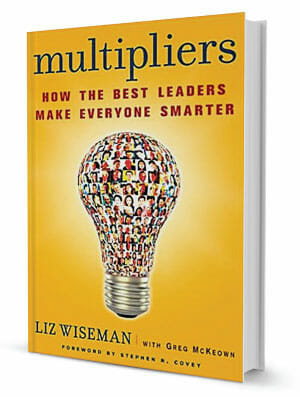Don’t be like Diminisher Jon, be like Multiplier Jon
I recently had the good fortune to participate in a simulation experience built upon the principles of Liz Wiseman’s research around leadership in the new millennium. In their book Multipliers (Harper Business, 2010), Liz and her research partner Greg McKeown sought to answer a burning question that plagued them both through their careers in various global organizations: Why is it that some leaders are able to derive maximum effort and engagement from their teams while other leaders in the same organization and environment only see about half that level of contribution from their own teams? The answer? Well, it’s both simpler and more complicated than you would think.
 Those leaders who get the best out of the talent they support are what Liz and Greg call “Multipliers.” These leaders operate under the assumption that people are smart, want to do great work, and will figure out many things on their own. They not only attract talent, they optimize it. They create the best space for thinking, stretch their teams, and instill accountability and ownership in every one of their team members. Conversely, those leaders who, based upon research, get on average 50% less out of their teams are “Diminishers.” These leaders firmly believe that their team will not be able to figure things out without them involved. They hoard and underutilize talent, create an environment of stress that stifles creative thought, and manage almost every detail of their team’s work-flow.
Those leaders who get the best out of the talent they support are what Liz and Greg call “Multipliers.” These leaders operate under the assumption that people are smart, want to do great work, and will figure out many things on their own. They not only attract talent, they optimize it. They create the best space for thinking, stretch their teams, and instill accountability and ownership in every one of their team members. Conversely, those leaders who, based upon research, get on average 50% less out of their teams are “Diminishers.” These leaders firmly believe that their team will not be able to figure things out without them involved. They hoard and underutilize talent, create an environment of stress that stifles creative thought, and manage almost every detail of their team’s work-flow.
Well, I’m not a tyrant, I receive pretty good feedback from our team, and I like to create a lot of white space for people to do their best work. I’m a Multiplier, right? Wrong, and here’s the nuance I learned that is so valuable for me. Even as a self-proclaimed “Multiplier” I tend to apply behaviors as a leader that Liz and Greg call “Accidental Diminishers.” Although, like so many others, I do it with the best of intentions, I can’t help myself and these things do negatively impact the team.
Here are two Accidental Diminishers I’m especially guilty of and what I’m doing to try and change how I lead in the future:
- I’m “Always On” – In an effort to create infectious energy with our team, I tend to share my point of view a little too much and too often. As a result, I talk too much and our team actually tunes me out. In the future, I’m going to communicate this positive outlook just once and then allow the team to chime in and build on those ideas. More space for them to work means more contributions from those closest to that work.
- I’m an “Optimist” – As a leader, I want to create a belief that our team can overcome any challenge that lies before us. However, there is a point at which the team wonders if I appreciate the struggle and the possibility of a failure. I need to better balance my optimism with the reality that the work required to succeed is hard and not always possible to achieve with my honest belief that we are up to the task at hand.
So, for those of you out there who have the great responsibility of supporting others as a leader, take a moment and reflect on your personal leadership style and approach. Are you a Multiplier or a Diminisher? And, even if you are a Multiplier, think deeply about those things that you can do to be even better and allow your teams to do the best work of their lives.
Source: Don’t be like Diminisher Jon, be like Multiplier Jon. | Jon Hodge | LinkedIn
- Embracing the opportunity to reinvent ourselves - September 10, 2021
- 2020 webinar series highlights - June 12, 2020
- Pivoting together: An update from the 45-degree mark - April 15, 2020
